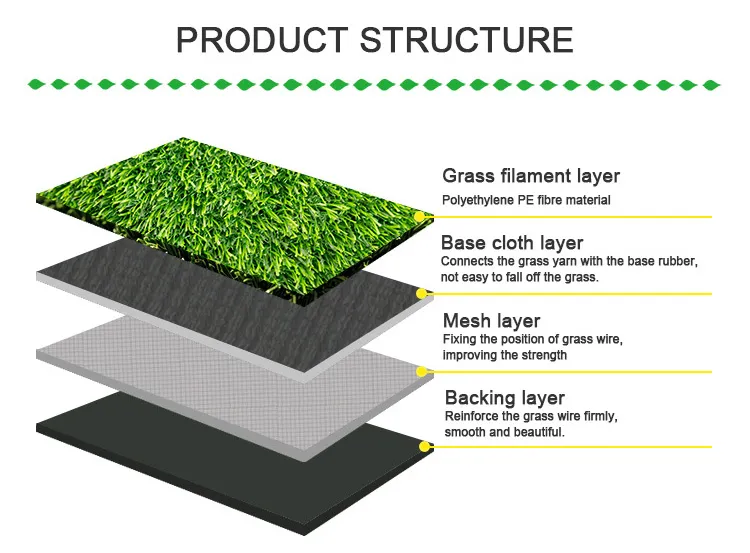
- Afrikaans
- Arabic
- Belarusian
- Bengali
- Czech
- Danish
- Dutch
- English
- Esperanto
- Estonian
- Finnish
- French
- German
- Greek
- Hindi
- Hungarian
- Icelandic
- Indonesian
- irish
- Italian
- Japanese
- kazakh
- Rwandese
- Korean
- Kyrgyz
- Lao
- Latin
- Latvian
- Malay
- Mongolian
- Myanmar
- Norwegian
- Persian
- Polish
- Portuguese
- Romanian
- Russian
- Serbian
- Spanish
- Swedish
- Tagalog
- Tajik
- Thai
- Turkish
- Turkmen
- Ukrainian
- Urdu
- Uighur
- Uzbek
- Vietnamese
cost turf soccer field
Nov . 20, 2024 13:21 Back to list
The Cost of Turf Soccer Fields An In-Depth Analysis
The choice between natural grass and artificial turf for soccer fields has become a significant consideration for organizations, schools, and municipalities. Particularly in regions where maintaining grass fields can be challenging due to climate, weather patterns, and high usage hours, the allure of synthetic turf has grown. However, the decision often comes down to cost. This article outlines the financial implications of installing and maintaining turf soccer fields, examining initial expenses, ongoing maintenance costs, and the long-term benefits and drawbacks.
Initial Costs
The upfront cost of installing a turf soccer field can range from $750,000 to over $1 million, depending on several factors, including the location, size of the field, and the type of turf chosen. High-quality turf products that replicate the feel of natural grass are typically more expensive. Additional costs also arise from site preparation, including grading and drainage improvements, which are essential to ensuring optimal performance and longevity of the field. Budget considerations must also include perimeter fencing, lighting, and goalposts, which can further inflate the initial investment.
Maintenance Costs
While synthetic turf is advertised as requiring less maintenance than natural grass, it is not maintenance-free. Regular upkeep, such as cleaning debris, checking for infill migration, and ensuring adequate drainage, is necessary to keep the field in top form. Annual maintenance costs for synthetic fields can range from $10,000 to $25,000. This figure includes cleaning, minor repairs, and inspections, which are critical to extending the lifespan of the turf, typically anywhere from 8 to 15 years, depending on usage and care.
In contrast, natural grass fields demand substantial maintenance involving mowing, fertilization, pest control, and irrigation. These tasks can lead to annual maintenance costs of $20,000 to $40,000 or more, depending on the climate and the level of play. For frequently played fields, these costs can quickly escalate.
Longevity and Replacement
One aspect that significantly influences the overall cost is the lifespan of each type of playing surface. Turf fields, with proper maintenance, can last a decade or longer, although this varies widely based on usage and care. By contrast, natural grass fields might need reseeding and renovation every few years, which can lead to additional costs over time.
cost turf soccer field

When evaluating long-term expenses, the total cost of ownership becomes essential. While initial turf installation may be higher, the durability and lower maintenance requirements can make it more cost-effective over time, especially for fields used heavily year-round.
Environmental Considerations
Beyond direct financial implications, the choice between turf and grass carries environmental considerations. The production and installation of synthetic turf involve petroleum-based products, which raises sustainability questions. Additionally, the infill materials, often made from recycled tires, can contain substances that some environmentalists argue may leach into the soil.
Natural grass, while more environmentally friendly in many respects, requires significant water resources, chemical fertilizers, and pesticides, creating its ecological footprint. In water-scarce regions, the need for irrigation can drive up costs and environmental concerns related to resource use.
Conclusion
Ultimately, the decision regarding turf soccer fields involves a multifaceted analysis of costs and benefits. For organizations considering the switch, it is crucial to conduct a thorough cost-benefit analysis that encompasses initial expenses, ongoing maintenance, and potential long-term savings.
Investments in turf fields can lead to increased playability and reduced weather-related cancellations, benefiting player development and community engagement. Nevertheless, the choice must align with the organization's budget, environmental considerations, and commitment to long-term maintenance.
In conclusion, while turf fields offer numerous advantages, particularly in terms of playability and durability, they come with notable initial expenditures and maintenance considerations. The decision should be driven by a comprehensive assessment of financial implications, usage patterns, and environmental impact, leading to an informed choice that serves the best interests of players and the community alike.
-
The Benefits of Artificial Turf for Indoors
NewsJul.15,2025
-
How Artificial Grass Suppliers Ensure Quality Products
NewsJul.15,2025
-
Artificial Grass and Pets: A Space for Relaxation
NewsJul.08,2025
-
Balcony & Outdoor Decoration with Artificial Grass
NewsJul.08,2025
-
Best Indoor Artificial Grass for Home
NewsJul.07,2025
-
Best Pet Turf for Dogs: Safe & Durable Artificial Grass Options
NewsJul.07,2025
Products categories









